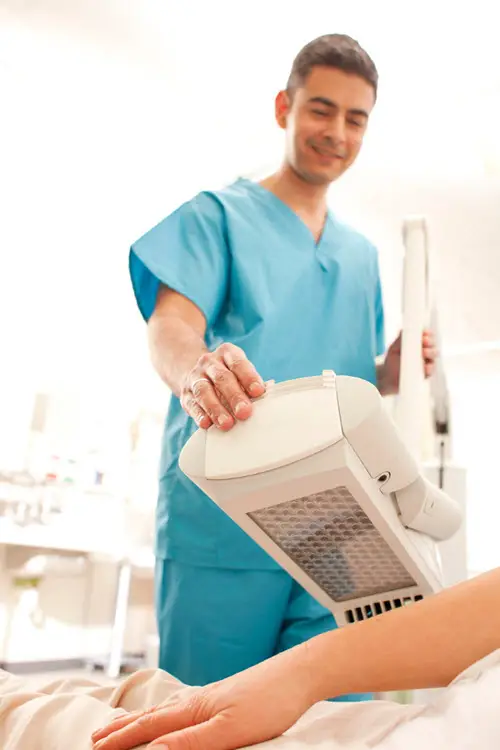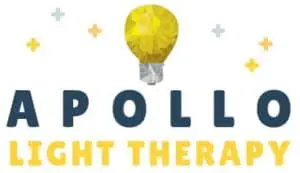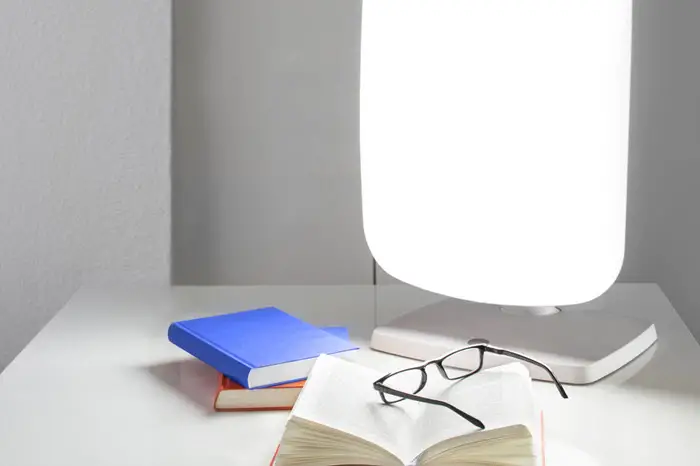Suffering from depression, I had heard many people were now finding relief with light therapy so I did some extensive research.
So what is Light Therapy? Light Therapy is using exposure to artificial light to treat conditions such as depression, Seasonal Affective Disorder (SAD), circadian rhythm disorders, skin conditions and more. A variety of light sources are used with different color and wavelength strengths, successfully treating different conditions.
How Did Light Therapy Start?
Light therapy was first seen in the cultures of Ancient Greece, Ancient Egypt and Ancient Rome. In these cases and more recently in civilizations such as the Incas, Assyrians and early German settlers, they worshipped the sun and recognized its healing properties. Indian medical literature dating back to 1500BCE describes using natural sunlight in conjunction with herbs to treat skin conditions. Buddist and Chinese culture literature from later (around 200CE) make similar claims.
Light therapy (also known as heliotherapy or phototherapy) was believed to have started with the Faroese physician Niels Finsen who was the first to develop an artificial light specifically for this purpose. He won the Nobel Prize in 1903 for his work and although, since then, scientific evidence for some of his treatments was lacking, from the late 19th Century to the 1930s, light therapy was considered mainstream therapy in the UK for treating a variety of conditions.

During the 1980’s researchers noticed a pattern of mood disorder symptoms were more severe in the winter months than in the summer months, especially in the northern hemisphere. Sometimes these symptoms were completely gone during the summer. Scientists named this disorder Seasonal Affective Disorder or SAD. What happened is that the short daylight days in winter affected the body’s natural circadian rhythms, which governs sleep, hormone production, body temperature and other type of biological functions. In 1984, researchers found out that bright white light did help in treating Seasonal Affective Disorder.
Most people have more energy and feel fit during the summer than the winter. The reason for this is that the sunshine during the longer daylight hours of summer helps with our daily rhythm of waking and sleeping. A product that can help with bright light therapy is an Apollo light therapy lamp.
For years light therapy researcher and doctors have known that full spectrum, light boxes work well at treating Seasonal Affective Disorder (SAD) and circadian rhythm disorders. Researchers have found that a very narrow band of blue light is the most effective color or wavelength in treating the disorders and have developed a new product for especially this range called the Go Lite.
It only uses the most effective wavelengths, which also mean fewer side effects than the traditional 10,000 lux full spectrum bright light therapy. Powered by Bluewave LED technology, the Go Lite is as effective as natural sunlight compared to only 40% for the 10,000 lux full spectrum products. Research has shown that Bluewave LED technology to be effective in treating Seasonal Affective Disorder (SAD).
It really wasn’t accepted as a treatment by the medical profession until 2001 which is when it was discovered that bright light therapy stimulated the production of brain chemicals that would help with SAD. A photo receptor in the human eyes reacts to the light and produces melatonin. Is does this by activating a point in the Hypothalamus which sends a signal to the pineal gland. The pineal gland suppresses the withdrawal hormone Melatonin and starts producing Serotonin. When serotonin is released, you become more active and alert which improves your concentration and motivation. Some companies have introduced bright light therapy in work areas as a safety measure for people working night shifts or in an area with minimal light such as an underground mine.
Since then, light therapy equipment has improved, with many people and medical professionals finding healing properties for conditions such as Seasonal Affective Disorder (SAD), circadian rhythm disorders, wound healing, depression, pain management and a variety of skin disorders such as psoriasis and acne.
How Does Light Therapy Work?
It depends on the type of light used and what condition you are treating. For a condition like Seasonal Affective Disorder (SAD) where people don’t get enough regular sunlight in winter months, the full spectrum light mimics sunlight, stimulating the pineal gland so the normal body’s production of serotonin and melatonin can occur.
This, in turn, helps the feelings of depression because the light is stimulating the body’s own system that would normally occur in summer circumstances. For other conditions, like acne, the blue light is used and kills bacteria P, which causes the acne spots.
Some conditions like SAD use light therapy lamps that either sit on the floor or a desktop, and they position themselves closely to it (most have a diffusing screen to filter out ultraviolet rays). The eyes need to stay open, but not looking directly into the light. A lot of people will read while participating in light therapy with a home device.
Other conditions require hand held devices or even masks (like in the cases of light therapy for skin conditions like acne). Whatever the method, light therapy is not invasive and is pain free.
Is Light Therapy Effective?
In a study conducted by Dr Michael Terman in 2006, 23 randomized control studies on phototherapy and dawn simulation were compared for effectiveness against mood disorders. All studies had been conducted in the period from 1975 – 2003 and involved 18 – 65 year olds who underwent phototherapy as opposed to a similar control group that did not.
The conclusion drawn was Phototherapy (bright light therapy or dawn simulation) was an effective treatment for seasonal affective disorder. Although bright light therapy reduced the symptoms of non-seasonal depression, it did not provide additional benefits when used as an adjunct to drug therapy.
Each year there is new research going on in how to use a light therapy lamp for
new diseases. Bright light therapy is being researched for afflictions such as Parkinson’s
disease, Alzheimer’s, Chronic Fatigue Syndrome and women’s menstrual health.
How Much Do I Need to Use My Light Therapy Lamp for It to Work?
There are recommendations by the manufacturers of each light therapy device but the two main things to remember are distance and duration.
It is important to follow the recommendations for distance as if you are too far away from the light it lessens the effectiveness. Equally, too little time each day will diminish results.
For recommendations on the distance and amount of light needed for Seasonal Affective Disorder, check out our article about Lux and how much you need each day.
Here are some general guidelines for a variety of conditions, but always check the manufacturer’s recommendations before starting any form of light therapy.
| Condition | Type of Light Therapy and Device | Distance | Duration |
| Seasonal Affective Disorder (SAD) | Bright Light Therapy 10,000 Lux lamp See explanation of lux and lumens | 11 – 15 inches away from the light | 20 – 30 minutes a day |
| Acne | Blue light therapy (hand held or mask) | Next to the skin | 10 minutes once a day |
| Wrinkles, antiaging | Red light therapy (hand held) In clinic red light therapy bed | On the skin if hand held. If in a red light bed, distance is not adjustable | 15 mins once a day, 3 – 4 times a week With hand held devices, they usually beep when 15 mins is up. You can then move to another part of the body and do another 15 mins |
| Chronic Wounds | Infrared light therapy lamp | 11 – 15 inches from the lamp Be guided by the heat. If it is too hot, make the distance a little further | Depends on the type of wound and how big. Anywhere from 15 – 30 minutes a day |
Who Can Use Light Therapy?
Light therapy is a non-invasive methodology with little to no lasting side effects. It is pain free, can be done in the home and is relatively inexpensive. Because of the ultraviolet filters on the devices, they are safe to use but there are a couple of exceptions for people with the following conditions:
- Those with eye conditions that make them sensitive to light
- Those taking medications that increase their sensitivity to light
- Those taking herbal supplements that increase their sensitivity (such as St John’s Wort).
As with any therapy, it is wise to speak with a medical professional first to make sure light therapy is not going to interfere with any current treatments or conditions.
Other things that a light therapy lamp can be used for are things such as circulation problems, muscle and joint pain. NASA has used light therapy so astronaut’s body clock does not get out of sync when they return to earth. Light therapy is also used on babies that have jaundice so they can get the yellowish tinge out of their skin.
How Much Does Light Therapy Cost?
While there are in clinic treatments, companies are now producing effective home devices that are easy to use and cost effective.
Medical light therapy lamps are around $400.
There have been some lamps found in places like Amazon or EBay for under $100. Be careful that they meet all the criteria of the lamp you want. The products range from the small handheld ones to tabletop units.
The old adage of “you get what you pay for” applies here. It doesn’t mean you have to spend $1000 on a unit to get the desired result, but going too inexpensive can mean less powerful lights which means more time is required in front on them to get the desired effect.
Make sure you check the specifications when comparing light therapy lamps so you are comparing apples to apples. Know your distance, duration and strength of light that you require for the condition you are treating. Do your research and then make an informed choice.
What Are the Side Effects With Light Therapy?
Side effects are rare with the use of light therapy but some people are more sensitive than others. If side effects are experienced it is usually only for a week or two and then they subside.
Possible side effects include:
- Headaches or eye strain
- Tiredness
- Blurred vision
- Irritability
- Itching
- Burning sensation
Terman, M. Review: light therapy is an effective treatment for seasonal affective disorder Evidence-Based Mental Health 2006;9:21.
Are There Different Types Of Light Therapy?
Yes. There are different types of light thearpy utilizing different light waves and colors of light to treat different ailments. The main ones are:


